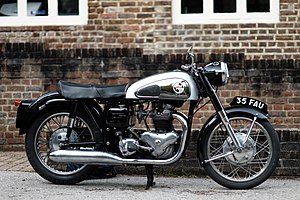A motorcycle is a two or three-wheeled motor vehicle controlled by handlebars from a saddle seat. These versatile machines serve multiple purposes, from daily commuting to long-distance touring and competitive racing.
Historical Development
Birth of the Motorcycle
The Daimler Reitwagen, created by Gottlieb Daimler and Wilhelm Maybach in 1885, marked the first petroleum-fueled motorcycle. Hildebrand & Wolfmüller launched the first production motorcycle in 1894.
Industry Evolution
By World War I, Indian led global production with over 20,000 bikes annually. The war transformed motorcycles into crucial military assets, with Harley-Davidson dedicating half its output to military contracts.
Technical Composition
Engine and Power
Modern motorcycles typically feature one to four-cylinder engines, though some rare models house up to eight cylinders. They connect to five or six-speed sequential transmissions, driving the rear wheel through chain, belt, or shaft systems.
Fuel Efficiency
Motorcycles excel in fuel economy due to their lightweight design. The average U.S. motorcycle achieves 44 miles per gallon. A modified Honda XL125 once reached an remarkable 470 mpg in controlled conditions.
Safety Considerations
Accident Statistics
Motorcycle accidents occur 37 times more frequently per mile than car accidents. The most common crash scenario involves other vehicles violating motorcyclists’ right-of-way.
Protective Measures
Many countries mandate basic rider training. The UK’s Institute of Advanced Motorists and Royal Society for the Prevention of Accidents offer advanced training programs. Proper hearing protection proves essential, as wind and engine noise can cause permanent hearing damage.
Riding Positions
Sport Position
Riders lean forward into the wind, with footpegs positioned below or behind. This aerodynamic stance enables higher speeds but can strain arms at low speeds.
Standard Position
An upright sitting position suits general-purpose riding, offering balanced comfort and control.
Cruiser Position
A low seat height with extended forward leg position prioritizes comfort over cornering ability.
Environmental Impact
Emissions
While motorcycles consume less fuel than cars, they can produce 10-20 times more nitrogen oxides and carbon monoxide. Modern regulations push manufacturers toward cleaner technologies, with many new models incorporating catalytic converters.
Market Status
The motorcycle industry sees strong global demand, with 58.6 million units sold in 2021. Honda, Yamaha, Kawasaki, and Suzuki lead production volumes. Electric motorcycles gain popularity, offering zero emissions and silent operation, though range limitations persist.
A motorcycle (motorbike, bike, or, if three-wheeled, a trike) is a two or three-wheeled motor vehicle steered by a handlebar from a saddle-style seat.


Motorcycle designs vary greatly to suit a range of different purposes: long-distance travel, commuting, cruising, sport (including racing), and off-road riding. Motorcycling is riding a motorcycle and being involved in other related social activities such as joining a motorcycle club and attending motorcycle rallies.
The 1885 Daimler Reitwagen made by Gottlieb Daimler and Wilhelm Maybach in Germany was the first internal combustion, petroleum-fueled motorcycle. In 1894, Hildebrand & Wolfmüller became the first series production motorcycle.
Globally, motorcycles are comparable numerically to cars as a method of transport: in 2021, approximately 58.6 million new motorcycles were sold around the world, while 66.7 million cars were sold over the same period.
In 2022, the top four motorcycle producers by volume and type were Honda, Yamaha, Kawasaki, and Suzuki.
According to the US Department of Transportation, the number of fatalities per vehicle mile traveled was 37 times higher for motorcycles than for cars.

